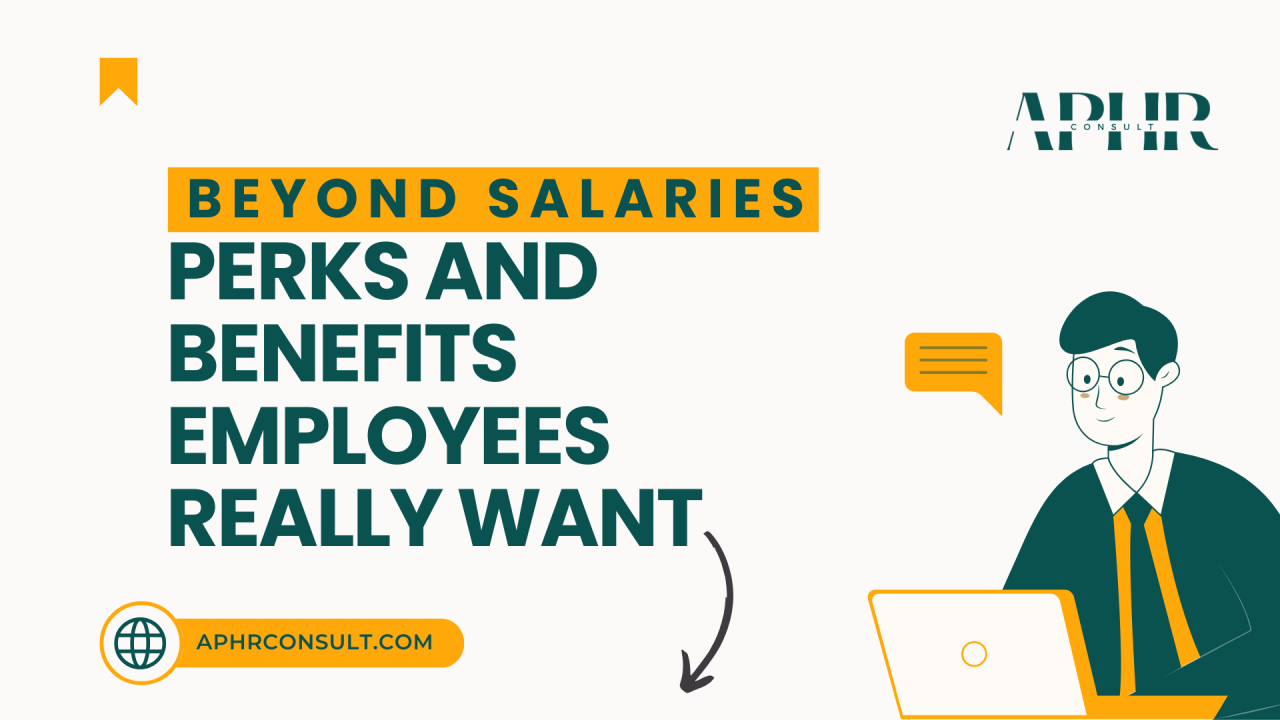Beyond Salary: Perks and Benefits Employees Really Want?
In today’s highly competitive employment landscape, the power constantly tilts between employers and employees. But as capitalism would have it, value needs to be exchanged for both people and organizations to meet their goals and achieve their vision.
As an organization, one way to ensure you stay competitive enough to attract and retain great talent is in your benefit strategy.
An employee benefit strategy is the organized approach that employers take in offering additional compensations or perks beyond regular salaries. While a salary compensates employees for the value they bring to an organization, a benefit strategy is designed to support their overall well-being, promote job satisfaction, and enhance an employee’s work-life balance.
Remember, employees are not just resources but individuals. When adequately cared for, they not only stay but thrive, offering more value and driving the organization’s vision due to a sense of belonging and purpose.
A successful benefits strategy recognizes that employees have diverse motivations and should tailor benefits accordingly. Some employees are intrinsically motivated by opportunities for growth, flexibility, and a vibrant culture. Others are extrinsically motivated by competitive salaries, profit sharing, and stock options. This goes to show that a one-size-fits-all approach is ineffective in managing top talent.
Creating an employee benefits strategy is not just about meeting industry standards—it’s about recognizing the unique needs of your workforce and offering perks that drive engagement, satisfaction, and long-term retention. Below are some key benefits that employees across various industries tend to appreciate the most:
1. Health and Wellness Benefits
● Comprehensive Health Insurance: Providing comprehensive health insurance signals to employees that their well-being is a priority. A good health plan can go beyond basic medical coverage to include dental care, vision care, and even preventive services. Expanding the scope of your health insurance policy demonstrates a holistic commitment to the health of your employees and their families.
● Mental Health Support: In today’s fast-paced work environment, mental health is a critical area of focus. Offer access to mental health services such as counseling, therapy, and Employee Assistance Programs (EAPs) to help employees navigate life’s challenges. Employees who receive mental health support are more likely to be engaged, productive, and committed to the organization.
● Wellness Programs: Promote a healthy lifestyle by providing wellness initiatives such as gym memberships, fitness classes, and wellness challenges. A proactive approach to employee health not only reduces absenteeism but also increases morale and long-term job satisfaction.
2. Financial Benefits
● Retirement Plans: A well-structured retirement savings plan, such as a pension scheme, signals long-term investment in your employees’ futures. By helping them save for retirement, you’re not only following regulatory requirements but also positioning your organization as one that cares about its people beyond their immediate contributions.
● Employee Stock Options (ESOs): Giving employees a stake in the company fosters a sense of ownership. When employees own part of the business, they are more motivated to see it succeed, aligning personal interests with company goals. This approach can drive greater commitment and performance.
● Employment Loan Schemes: Consider creating an employee loan scheme or offering salary advances. If internal cash flow allows, these can be interest-free or low-interest loans to help employees manage personal financial needs. Alternatively, partnering with financial institutions for employee-friendly loan options can enhance financial security without straining company resources.
3. Work-Life Balance Benefits
● Paid Time Off (PTO): Offering generous vacation and personal time-off policies allows employees to rest and recharge. Research consistently shows that employees who take regular breaks are less likely to experience burnout, leading to higher productivity and fewer sick days.
● Sabbaticals: For employees with long tenures, sabbaticals offer an extended break to pursue personal growth or interests. This benefit can be a powerful retention tool, fostering loyalty and reducing turnover in key roles.
● Flexible Work Arrangements: In today’s digital age, flexible work arrangements such as remote work or flexible hours are increasingly valued. Not only do they empower employees to manage their time effectively, but they can also help reduce overhead costs for the company. Flexibility is now a critical factor in talent retention and attracting top talent.
4. Lifestyle Benefits
● Commuter Benefits: Assisting employees with their daily commute through public transportation subsidies or parking allowances can help ease the financial burden and make daily commutes more convenient.
● Employee Discounts: Partnering with retailers or service providers to offer employee discounts on products, travel, or entertainment is a simple yet highly valued perk. This can be managed through gift voucher platforms, making it easy for employees to access exclusive deals.
● Company Events and Social Activities: Fostering a sense of community within the organization through team-building activities and social events is a great way to build camaraderie and improve workplace culture. It helps break down silos and creates a more collaborative environment.
● Employee Recognition Programs: Recognizing and rewarding employee achievements boosts morale and reinforces positive behaviors. Regular recognition programs, whether through formal awards or spontaneous shout-outs, contribute to a motivating workplace culture.
5. Professional Development Benefits
● Training and Development Opportunities: Continuous learning is essential for both employee and organizational growth. Offering workshops, conferences, and online courses helps employees sharpen their skills, ensuring they remain competitive and invested in their roles.
● Mentorship Programs: Establish a formal mentorship program where less experienced employees can benefit from the guidance of senior employees. This would foster a culture of growth and support, enabling employees to advance their careers within your organization.
● Career Advancement Opportunities: Clearly defined career paths and opportunities for internal promotion demonstrate that the company is invested in their employee’s growth and progression within the organization. Employees are more likely to stay when they see a future with the organization and have opportunities to develop into leadership positions.
Remember, your benefits strategy should include the eligibility criteria, benefit coverage details, enrollment processes, and procedures for managing these benefits. By viewing your employees as individuals with unique needs and tailoring your benefits accordingly, you can create a competitive and desirable workplace, drive job satisfaction, and enhance overall performance.
A well articulated benefits strategy also positions your organization as a top employer of choice which can give you a competitive edge in the market and enhance your company’s reputation.
By following these guidelines, you can create a benefits strategy that supports your organization’s goals and helps you attract, retain, and motivate top talent.
Similar Articles
FROM HUMAN RESOURCES TO HUMAN IMPACT: HR as the Engine …
Accelerating Action: Practical HR Strategies for Gender Equity International Women’s …
The Cost of Losing Top Talent and How to Prevent …

